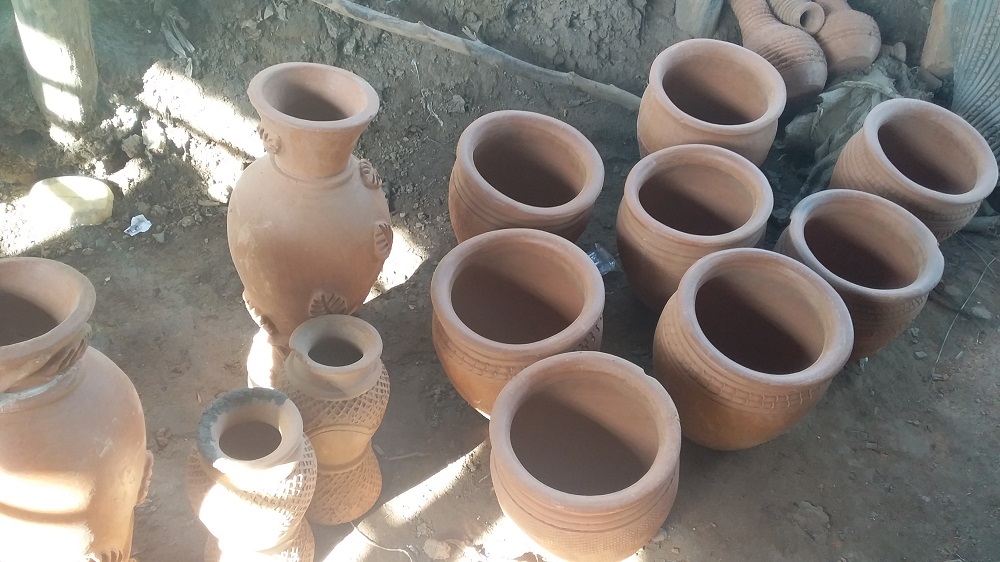[dropcap]T[/dropcap]he mention of Ilesi area near Khayega trading centre in Kakamega would certainly evoke feelings of the ‘crying stone’, which resembles a human figure, perpetually in tears flowing from ‘head to toe’. It is of great cultural and spiritual importance to the Luhya community and the Isukha sub-tribe in particular.
Villagers believe that when the stone cries, it is a good omen, signalling a bumper harvest, for instance. When there is drought, the community performs rituals here to persuade the gods to bring rain.
Other rituals are performed to allay disasters. The site is also used for cleansing victims of incest in families.
But there is another outstanding trade that goes on here involving moulding of various artifacts and vessels from clay. “This business was first owned by my father-in-law who later passed it down to my husband,” Mrs Jane Shisundi, one of the potters, says as she paints a large flower vase.
She in old days moulders made only pots but the art has expanded to other vessels and items today. The items moulded include water pots, flower vases, jars, dishes and other artifacts depicting various animals and birds.
She was introduced to the business by her husband, Ronald Shisundi, who says the process begins by collecting the needed raw material: the dark sticky soil which is bought; the other is loamy clay with silvery particles and red soil which are then mixed to obtain the ideal texture.
SEE: VILLAGERS WHO HAVE TURNED NIGHT-RUNNING INTO AN ART
The material is kneaded to remove particles and then put on a rotating machine that enables the potter to mould to the desired shape and pattern. “An assortment of shapes and patterns are made depending on the creativity of the potter such that some items can take the shape of animals and birds,” he said.
After moulding on the machine, finishing is done, especially to the bottom part to ensure it’s smooth. The raw products, he says, are then dried in the sun for a week before they are taken to the kiln for the final stage of curing.

He said initially they could cure the clay works in the open kilns but they have since adopted those with chimneys which give best results. From the kiln the vessels are cooled and then painted with different colours to attract buyers and fetch good prices.
READ: MEET THE OLD WOMEN BEHIND THE KYONDO BASKETS
The cost of the vessels depends on the size and design as some require more money and time to produce. A flower vase roughly goes for Ksh150, a dish Ksh100, a jar Ksh150 while a 30-litre water pot costs Ksh400.
He says the business has created employment to tens of the youth, men and women who have mastered the art of pottery. “Transportation is the major challenge as the products are highly delicate and so it is hard to ferry them over a long distance in search for the market,” he stated.

















1 Comment